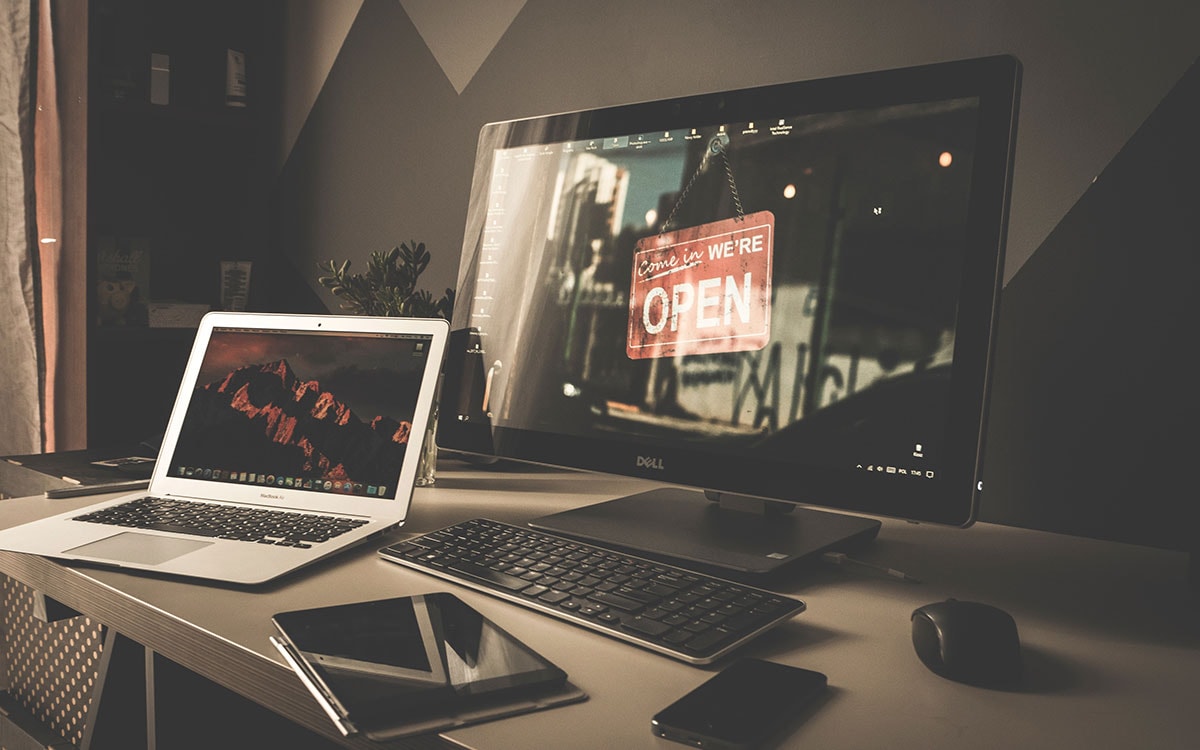What Do The Best Ecommerce Sites Right Now Have In Common?
The online retail world may have started as a vast expanse of opportunity, but it’s rapidly filled up and started to approach the point of saturation in various areas. There’s no doing away with the competition, and simply outlasting it isn’t a good plan: even if your rivals fail, new ones will appear to fill the void. All you can do is make your business as good as it can possibly be.
In all aspects of your operation, you need to look for ways to excel: this ultimately encompasses everything from your marketing and advertising to your copywriting and user interface design. The main element, of course, is your website — as the hub of your online operation (and its front door), you absolutely must make it as good as it can possibly be.
So, what’s the best way to do this? You can review it from top to bottom and come up with improvements from scratch if you want, though I wouldn’t recommend it. Originality is a great goal in principle, but it isn’t very practical, and it’s often more about vanity than anything else. Instead, I recommend taking heavy inspiration from other thriving ecommerce sites, gleaning insight from the commonalities they share.
Though I strongly recommend that you do your own research at some point, we’re going to run through some of the top things that the best ecommerce sites have in common. By the end, you’ll have a solid grounding of what you need to work on. Let’s get started:
Robust infrastructure
An excellent site needs an excellent platform underpinning it. Ideally, your CMS should be flexible, configurable, regularly updated, secure, as inexpensive as possible, and easy to extend. While there are various options on the market, the simplest is just to use WordPress (the most popular CMS in the world) and combine it with an ecommerce plugin such as WooCommerce. That will ensure that your site remains stable at all times.
Eye-catching imagery
Having top-notch copy is great, but visuals often matter more — particularly on mobile devices. Shoppers scroll through pages quickly and switch between sites almost as fast, and having arresting images is excellent for grabbing attention. It’s also vital for brand identity. You should put work into everything from your core brand elements (most notably your backgrounds and your logo — there’s no reason to have a low-resolution logo) to your product images (they should have neutral backgrounds, even lighting, and excellent framing).
Strong internal search
Once you’ve brought someone to your store, you want to keep them around for as long as possible, and that means making it easy to pivot between product pages. If the page they land on isn’t what they want, a strong internal search bar will let them filter without leaving, making them more likely to ultimately convert (if they leave, they may not return). Here are some plugin options for WooCommerce sites.
Fast and robust hosting
Choosing a self-hosted platform like WordPress gives you the freedom to choose the hosting you use, but don’t make the mistake of going as cheap as you can. That might work most of the time, but when traffic ramps up around peak times and holidays (e.g. BFCM), that hosting will struggle. Look for a host that can handle heavy traffic and works well with your CMS.
High-quality social media support
Social media is huge for retail, seeing users discuss products, promote them to their followers, and (all too often) complain about them. If someone complains about your brand on social media and you don’t do something about it, it can damage your reputation. That’s why the best sites have social media teams monitoring their mentions and engaging in damage control— and you can do the same, even if not on the same scale.
Generous return policies
Amazon has really led the way when it comes to ecommerce service, and by making it so easy to return items, it’s essentially forced other retailers into following suit. It isn’t unreasonable: when you order something online, you’re taking it on faith that it’s what you expect. If it isn’t, you should be able to return it easily. By offering a great return policy, you reassure buyers that they won’t end up stuck with products they don’t want, and convince them that you can be trusted.
Mobile-first design
It might seem obvious at this point, but there are still plenty of websites that don’t work very well on mobile devices, and this is about going beyond that to be mobile-first. This design approach is about starting with the mobile layout and extending it as needed for laptops and desktops. The mobile version of your store should be the slickest and easiest to use — if it isn’t, you have some major improvements to make.
Easy social login
Think about how frustrating it can be to order from a store you haven’t visited before. You pick out the item you want, add it to your cart, go to the checkout… and discover that you need to stop and create a user account before you get started. It can be enough to push you elsewhere. This is why you should be offering social login functionality, allowing a new visitor to log in using a live social media account (usually Facebook or Twitter) — they only need a couple of clicks to share the details, and you can create a guest account to process their order.
Not one of the features we’ve looked at in this article are beyond the reach of small retailers. It’s just a matter of investing in your website to whatever extent you can, because that investment will be returned over time through more conversions.
You can make improvements through the DIY approach to save money and pick up some new skills, but I wouldn’t recommend it. Alternatively, you can outsource the entire process to a creative development agency, taking some experts with bringing your website up to the necessary standard — so why not give it a try?
We focus on beautiful web design that delivers results for your organization. Our specialty is creating customized WordPress websites.
Are you looking for more traffic, leads and customers? We provide on-going digital marketing to help you reach more customers and grow revenue.
About Us
Johnny Flash Productions
Johnny Flash Productions is a creative agency based outside of Washington D.C. that focuses on digital strategy, web design and development, graphic design and event production that helps businesses get better results from their marketing.
Our organization couldn't be happier with the beautiful website Johnny Flash Productions created for us. They helped streamline thousands of components from our previous site into a site that portrays the mission of our organization and tells the story of our purpose while bringing in and engaging new and returning visitors.
We wouldn't hesitate to use them again and have already recommended them to several people who have seen the quality of our new site.
We have also seen a remarkable uptick in response in those who have gone to the site just in the first few weeks since launch in signing up for future communications. That is the sort of prolonged engagement we have been looking for, and Johnny Flash Productions delivered beyond our hopes.

I cannot begin to speak highly enough of Johnny Flash Productions. I was first alerted to their company by doing a Google search & found only one company around with so many 5-star reviews, so was curious if they could all be real. I found through working with John & Eowyn & the Johnny Flash team that we were able to collaborate to create the perfect website for our organization.
As a team of designers, it was important for us to differentiate ourselves & express the nature of our organization & ourselves through this most valuable medium of the modern age. The team @ Jonny Flash absolutely nailed it & we could not be more pleased.
Thank you Johnny for facilitating such an first class experience & thank you Eowyn for being our guiding light & all of the hard work that you put into helping our company shine!

John has been managing my website SEO and Google Ads for only a few months now and his services have already generated profitable leads. I can’t say enough about his company’s professionalism, promptness and results oriented approach. Hiring his company has been an excellent business decision!!

We are truly grateful for our time working with John and his team. They were able to manage a full redesign within a relatively tight timeline and delivered an impressive site that also worked well through mobile devices as well.
They kept us on schedule as well and were a pleasure to work with. The team continues to be incredibly responsive following the initial launch.

Johnny Flash redesigned both our church website and our preschool website to align with our new branding, helped us switch web hosts and met some tight timelines as well. John and his team are always professional, have fresh ideas and are quick to respond to questions.
They also worked us to revamp both websites within our set budget while still providing a quality web design and custom look. If I could give them ten stars, I would!

Efficient, effective and professional - Johnny Flash Productions did an awesome job of rebranding and migrating our WordPress website. We launched last week and there is positive feedback all around for the sleek, new, mobile friendly look.

I must admit that I was not crazy about revamping our website, primarily due to the time commitment and cost. However, in looking through the updated content this morning, the new website looks terrific and was well worth the time and expense.
Thanks to you and your team for all of your hard work.

Johnny Flash Productions gets results building stand-out websites that are optimized for success! Their team of professionals worked quickly to get to know my business and developed a plan of action. Their designers developed an amazing design that exceeded our expectations. If your organization or business is looking to build or improve your presence online.
I highly recommend Johnny Flash Productions!

We chose Johnny Flash Productions because I knew the person, John Falke. Relationships are important. Knowing character is important and relevant to business decisions. Knowing whether a person/business will stick by their word is important along with can they perform.
A company that can perform is good, but if they do not stick by their word, skill means nothing. You produced a great product, worked with us, gave a fair price and kept us on task.

John and his team at Johnny Flash Productions did an amazing job on our new company website! John was very patient and professional throughout the entire process and always responsive to any request we had.
I would definitely recommend their services to anyone looking to create a website!

I recommend Johnny Flash Productions because they respond promptly and with honesty when requesting their services, they are very professional and I am a satisfied client!
They fulfilled my expectations with the website and branding project. It has already been a success and helped us reach our goals for our business. Thanks Johnny Flash Productions.

We regularly get rave reviews about our website. Often other non-profits have asked us for a referral. Johnny Flash was easy to work with and has always been responsive to our needs. They provided several built in tools that help keep our website from becoming stale.

Johnny Flash Productions has played an integral role in the growth of our business. From logo redesigns, website design and management, fliers, banners, signs and more, they have done an incredible job of taking our ideas and WOWing us with his visual designs.
John's knowledge base allows them to understand our ideas and concepts and bring it all together in a professional, well thought out deliverable. Their work has always exceeded our expectations in both quality and speed.
We look forward to continuing our long business relationship as he continues to stay on top and ahead of visual marketing trends without losing it’s classic appeal.

Johnny Flash Productions is a company that truly cares about their clients, this is obvious by not only their work ethic but they also the way they put their heart into every project they complete.
Johnny Flash Productions was a pleasure to work with, we look forward to working with them again in the future.

When we all get a little too busy, sometimes we forget to say a heartfelt "Thank You"! I am so grateful that God led us to partner with you. I know good things will come from our hard work done together in His name. The website is terrific. Pure and simple.
Thanks for your expertise, guidance and always friendly attitude.

I was looking for a web designer who was not only talented, but could deliver - and keep delivering what I needed month after month. The team at Johnny Flash Productions brought ideas to the table that complemented what I wanted to do with my website and their design exceeded my expectations.
I was willing to pay more for their continuing monthly service than I had paid previously because they laid out what I could expect from their team. So far, they have under promised and over delivered.

Johnny Flash Productions helped breathe new life into Immanuel’s online presence with their wonderful redesign of our website. Aside from their consummate professionalism, flexibility and keen attention to detail, they were an absolute pleasure to work with.
It had to be a daunting task to be presented with the enormous number of expectations , hopes and ideas generated from our church’s website committee throughout the course of the website re-design, but if anything, Johnny Flash's resulting work exceeded all expectations.
I’m sure I can speak for all of us on the committee when saying that we’d heartily recommend Johnny Flash to any church or organization in need of a skilled, knowledgeable, easy-to-work with design company.

Exceeded all expectations in their abilities to professionally evaluate and customize our company WordPress website. Above all else, their customer service is the best I've dealt with in a long time with any company I've worked with in the past. I definitely recommend Johnny Flash Productions to anyone looking for exceptional service, professional detail and customer support.

John, Joli and Team provided the path forward for us on how to take our desire to have a brand new website to getting it launched and live. We started at a high level of who we were and what we wanted to accomplish with our website.
John provided an up front schedule of what tasks would be completed by when from their team.
There were tweaks along the way that we would make and feedback given, and it was always well received with the changes being made in a timely manner. Thanks John and Joli.

We used Johnny Flash Productions to help us recreate our website and to make it more visually appealing and more current. Working with them was very pleasant and easy. They really listened to what we were looking for and worked within that framework.
I would highly recommend them. I am happy to provide a reference or answer any questions that you may have.

Professional, knowledgeable, friendly! Everything you could ask for in a website development firm/SEO company. Johnny Flash Productions is the best website development firm and SEO firm in Northern Virginia!

I would like to thank Johnny Flash Productions for there great service my company has been able to get to get to the top of Google searches in half the time most companies take. I am now receiving 3 to 5 viable leads a day that all lead to service work for my company. And I can not thank them enough for all of there support with my site and maintaining it for me.

We found Johnny Flash Productions to be professional and a pleasure to work with. Their industry knowledge and creative approaches were incredibly helpful.
Our new website exceeds our expectations and we look forward to continuing our relationship with Johnny Flash Productions with their responsive and ongoing website upkeep, maintenance and SEO.

John and his team do top quality design work, website work, and just about anything you would need to have a dynamic presentation in both print and digital media. Incredibly talented and innovative, you can call him with a "thought" that comes back to you better than you ever imagined. Truly professional and talented, I could not recommend more highly.

John and his team are great to work with. We have worked with them on a broad range of projects including logo development, campaign materials and website design. They are a great partner!

Johnny Flash and team approached the project with as much passion as we had (we're a very passionate team) for the site and logo refresh. We worked through the logo and website designs and within a couple of weeks, it felt as if we were all one company.
The team was super responsive, understood our vision for the logo/website and communicated clearly every step of the way.

They did excellent design work, were professional and responsive. They were an absolute pleasure to work with, and I plan on using them for future projects.

John Falke and Johnny Flash were incredible to work with and produced a very professional and progressive website for Covenant Park Consulting and were completely responsive to our vision and goals.

This process was so much easier than I expected. John listened carefully to what I was expecting to accomplish with our website and kept me focused on our objectives.
We are now able to register preschool students online (especially important during COVID). Parents are very happy that now they have the option to pay by credit card. I would highly recommend this company!

Such an amazing service. A beautiful website that has already gotten the practice new business. John kept us on track so that our website was up and running in the time allotted. Thanks so much. Highly recommend.

Johnny Flash Productions and their team were aces to work with. Their process was simple, and project schedule was on target.
More importantly, their Storybrand mindset opened us up to a whole new world for our website presence, business development and even our own client communication.

Johnny Flash did a great job on our new Wellesley Hills Congregational Church website. Delivered on time and on budget. They helped us shape good content as well.
We were so satisfied we had them redo our Wellesley Nursery School in the Hills website also.

I have worked with Johnny Flash Productions on 3 of my own websites and recommended Johnny Flash productions to two other family members who were also in need of new websites. We have all had an exceptional experience during the process.
The staff are very responsive, organized, on time and they follow through until the work is complete. We valued them so much that we use them for our monthly maintenance and they help with our advertising online.

Working with John and his team has been such a wonderful experience! They consistently go above and beyond to quickly complete our requests, and it's great working with a team of true experts.
I highly recommend them for anyone looking for WordPress developers.

The Johnny Flash team is incredibly skilled, attentive and patient. We are very happy with our new WordPress website!

Excellent WordPress Web Designer, we are so lucky to have them design our website we were very satisfied with the results!

It has been such a pleasure working with John and Nicole to develop our WordPress website. The team is very professional and worked closely with us during the entire process. We couldn't be happier with the result, we love our new website.
I definitely recommend Johnny Flash Productions!

Was a pleasure to work with Johnny Flash Productions to walk through the full life cycle of a complete redesign of several of our ministries websites. Working with people who are experts caused us to think outside the box in how we really tell our story through our website.
The entire team was great to work with and the value has been incredible! God is good!

We have a fabulous website thanks to their excellent process.

We have been very pleased with our website design experience with Johnny Flash. We appreciated how their structured process enabled our website team to prioritize our goals for the project and develop a final product customized to meet our individual needs.

We had a great experience working with Joli and the team at Johnny Flash. Their whole process was very helpful to shaping and sharing our website message.

Johnny Flash Productions was a joy to work with! They helped our church completely re-do our website. They also helped us refresh our look and logo. We have had many people comment on how much they love our new website and how much easier it is to navigate.








